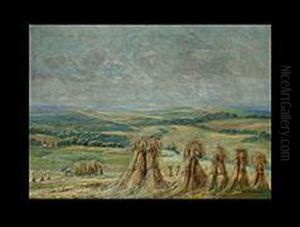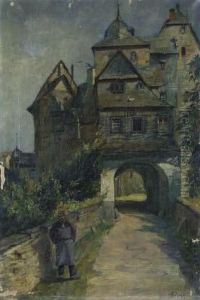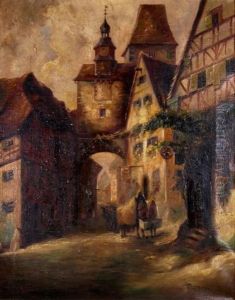Max Herterich Paintings
Max Herterich was a German-born American painter, recognized for his contribution to the landscape and portrait genres of the late 19th and early 20th centuries. Born on March 17, 1859, in Passau, Germany, Herterich immigrated to the United States, where he would eventually find his artistic voice and community. His journey into the arts led him to study in Munich, a city known for its vibrant art scene and academic institutions. This period was crucial for Herterich, as it allowed him to hone his skills, absorb European artistic traditions, and begin to develop his unique style.
After his studies, Herterich chose to settle in Boston, Massachusetts, a decision that would mark the beginning of his significant contributions to the American art scene. Boston, at the turn of the century, was a hub for artists, intellectuals, and innovators, offering a fertile ground for Herterich to grow his reputation. He became known for his landscapes that captured the essence of the American Northeast, as well as for his portraits, which often depicted prominent figures of his time. His ability to blend the techniques learned in Munich with the atmospheric qualities of the American landscape gave his works a distinctive quality.
Herterich's career was marked by both public and critical acclaim. He exhibited his works in numerous galleries and institutions, earning recognition and awards. His paintings were celebrated for their vibrant use of color, meticulous attention to detail, and the emotional depth they conveyed. Despite his success, Max Herterich remained a dedicated and humble artist, constantly striving to improve his craft and explore new artistic horizons.
Max Herterich passed away on September 14, 1919, in Boston, leaving behind a legacy that continued to influence the art world. His works are collected by art enthusiasts and are part of several prestigious collections and museums. Herterich's contribution to American art, particularly in the realm of landscape and portrait painting, remains significant. Through his European training and American experiences, he bridged two worlds, bringing a unique perspective to his adopted country's art scene. His paintings continue to be admired for their beauty, craftsmanship, and the glimpse they offer into a transformative period in American art history.


